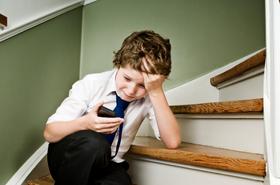The percentage of students achieving proficiency in reading/language arts was <50% (which was lower than the Minnesota state average of 74%).
School Overview
School Type
Grades Offered
Grades 9-12
Total Students (10-11)
2 students
Total Classroom Teachers
n/a
School Rankings
Reading/Language Arts Test Scores (% Proficient)
(10-11)<50%
74%
Student-Teacher Ratio
n/a
13:1
American Indian
(10-11)n/a
2%
Asian
(10-11)n/a
6%
Hispanic
(10-11)50%
7%
Black
(10-11)n/a
9%
White
(10-11)50%
74%
Hawaiian
(10-11)n/a
n/a
Two or more races
(10-11)n/a
2%
School Statewide Testing
School District Name
Source: National Center for Education Statistics (NCES), MN Dept. of Education
Frequently Asked Questions
How many students attend Pelican Rapids Alternative Program High School?
2 students attend Pelican Rapids Alternative Program High School.
What is the racial composition of the student body?
50% of Pelican Rapids Alternative Program High School students are Hispanic, and 50% of students are White.
What grades does Pelican Rapids Alternative Program High School offer ?
Pelican Rapids Alternative Program High School offers enrollment in grades 9-12
What school district is Pelican Rapids Alternative Program High School part of?
Pelican Rapids Alternative Program High School is part of Pelican Rapids Public Schools.
Recent Articles

School Vouchers: Updated Pros and Cons (2025 Review)
Comprehensive 2025 analysis of school vouchers, weighing benefits and challenges for families, funding, outcomes, and policy directions.

Benefits and Drawbacks of Homework in 2025
Explore updated 2025 insights on homework’s benefits, drawbacks, mental health impact, best practices, and policy trends in U.S. public schools.

Charter Schools vs Public Schools 2025: Key Differences & Trends
Explore updated 2025 insights comparing charter schools vs public schools, enrollment, academic outcomes, funding, and real-world examples for families and educators.





